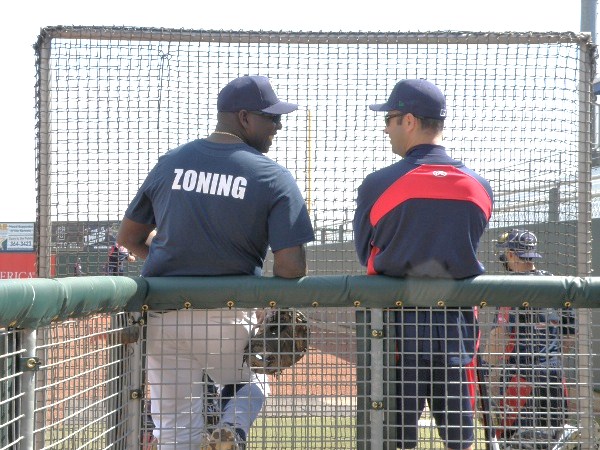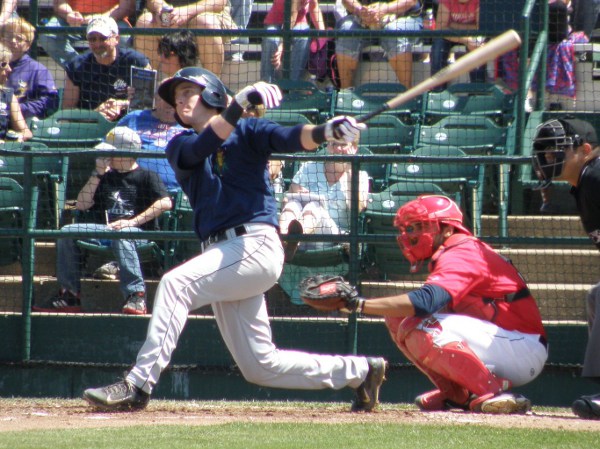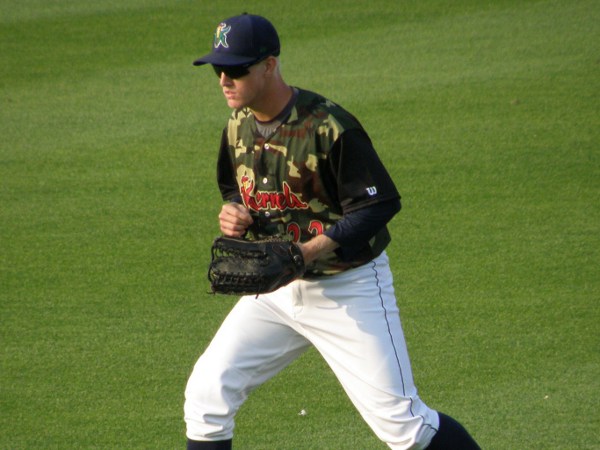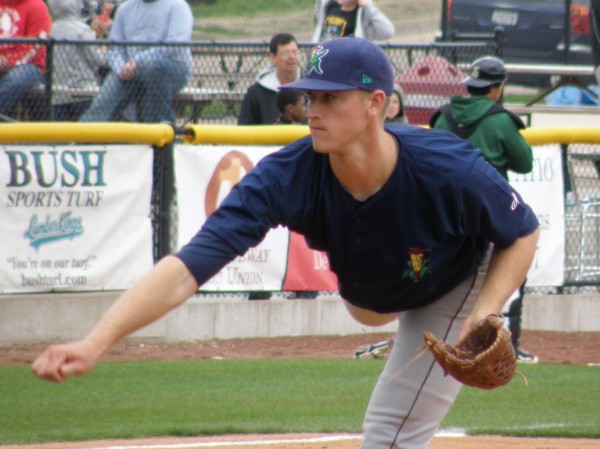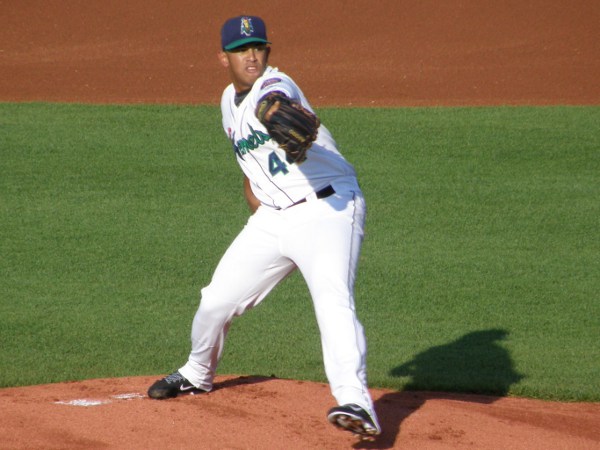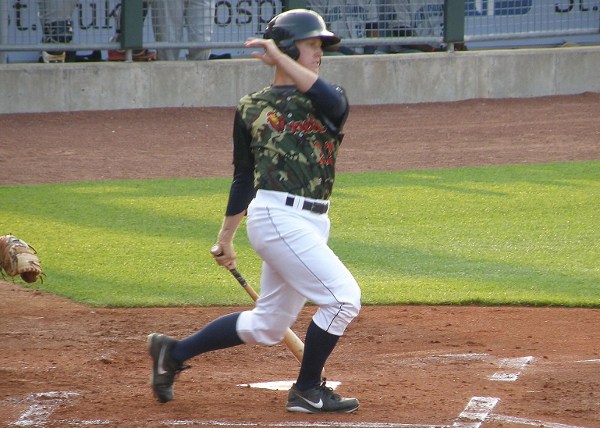It was the best of times, it was the worst of times.
Granted, it probably wasn’t anywhere near the “worst of times” for Stuart Turner and Mitch Garver, but the excitement of learning they had been drafted by the Minnesota Twins in the June, 2013 Amateur Draft had to have been at least slightly dampened with the realization that the Twins had drafted both of them.

Going into that draft, the Twins knew they needed catching. They didn’t yet know just how desperately they needed catching.
The Twins had allowed their organization to become thin at a critical (if not THE most critical) defensive position. And it was understandable, to a degree. After all, they had the reigning American League Most Valuable Player behind the plate. Catcher Joe Mauer was not only good for a .300 batting average and .400 on-base percentage every season, but he had only just turned 30 years old a few weeks earlier.
What the Twins’ brass didn’t know – and couldn’t know – as they gathered in their offices for the June 2013 Amateur Player Draft, was that Mauer would never get behind the plate to catch another big league game after the 2013 season, due to persistent concussion problems.
Still, to their credit, they identified the catching position as one that warranted some focus in the 2013 draft.
And focus they did.
The Twins used three of their top 10 picks in 2013 on catchers and added another in the 22nd round.
After selecting pitchers Kohl Stewart and Ryan Eades in rounds one and two, Minnesota picked Ole Miss catcher Stuart Turner in the third round. He was the 2013 Johnny Bench award winner, presented to the top NCAA Division I catcher.
In the sixth round, the Twins grabbed a high school catcher, Brian Navarreto.
New Mexico Lobo catcher Mitch Garver was selected by the Twins in the ninth round. Garver was one of three finalists for the Johnny Bench award that Turner won. In fact, it was the second year that Garver was a Bench Award finalist.
The Twins added Alex Swim out of Elon (NC) University in the 22nd round, to complete the 2013 catching class.
Adding that many catchers to the organization at one time required a bit of roster manipulation on the part of the Twins farm director Brad Steil and his group. You obviously can’t just start the entire group at the same level and still get everyone enough work behind the plate to develop them.
Navarreto, being a few years younger than the others, was easy to plug into the rookie league programs.
Fair or not, as a lower round pick, there would be less emphasis on getting Swim adequate opportunities to show what he could do behind the plate.
By the end of the 2013 season, of course, the Twins pretty much knew Mauer’s career as a catcher was effectively over and suddenly the club and its fans became much more interested in the catchers coming up through the farm system, particularly in Turner and Garver.
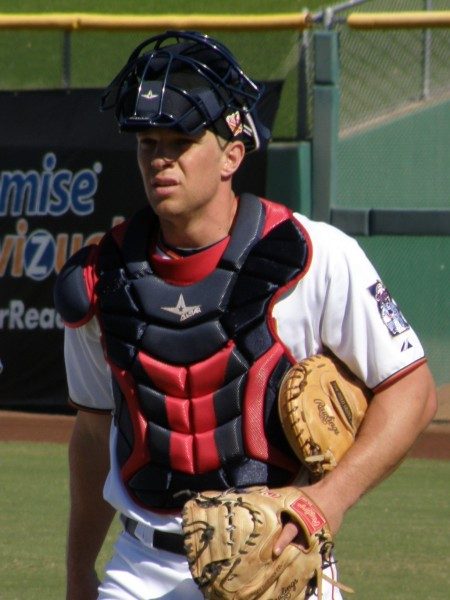
The Twins don’t make a habit of starting many of their young players at the Advanced Class A level in Ft. Myers, but it was important that both Turner and Garver get as much time working with pitchers from behind the plate as possible. That could only be accomplished by splitting the two catchers up in their first full season of professional ball. To accomplish that, Turner was assigned to Ft. Myers, while Garver spent 2014 at Class A Cedar Rapids.
A year later, Turner and Garver remained one level apart as Turner was promoted to AA Chattanooga and Garver moved up to Ft. Myers.
In fact, the first time the two became teammates wasn’t even technically with a Twins affiliate.
The Twins sent both catchers to the Arizona Fall League in October, 2015. Both caught 11 games and DH’d in one for AFL champion Scottsdale. Garver hit .317 for the Scorpions, while Turner hit just .171.
That set up a 2016 season where Garver and Turner would both begin the year at Chattanooga.
While the two had been effectively competing with one another for some kind of mythical “Twins top catching prospect” designation since that 2013 draft day, this was the first time Garver and Turner were set up to go side-by-side into a regular season at the same professional level.
That dynamic continued into the second week of August, when the Twins had a spot for a catcher open up at their AAA affiliate in Rochester and the call went out to Chattanooga for someone to finish out the season with the Red Wings.
Since Turner was about to finish his second Class AA season with the Lookouts and Garver was still in his first tour through the Southern League, you might have thought that Turner would get the promotion – but you would have been wrong.
With Garver hitting a respectable .257 (.753 OPS) at the time, while Turner was hovering around .210 (and an OPS around .650), it was Garver that was packing for Rochester.
But it wasn’t just his bat that appeared to have pushed Garver ahead of Turner on the Twins’ organizational depth chart. He threw out 52% of runners attempting to steal on him (23 of 44 attempts) in Chattanooga. Turner threw out 19 of 48 attempted base stealers for a 40% clip.
Admittedly, using “caught stealing” statistics as a measure for a catcher’s work behind the plate is iffy, at best. For one thing, runners steal bases off of pitchers as much as (if not more than) off catchers. However, in this case, that factor is largely mitigated since the two were catching members of the same Chattanooga pitching staff.
After the season, the Twins again sent Garver to get additional work in the Arizona Fall League, where he hit .229 and put up a .756 OPS, fueled by four home runs and four doubles in 70 at-bats for the AFL runner-up Surprise Saguaros.
Whether Garver will eventually hit and, perhaps more importantly, catch well enough to work his way into the Minnesota Twins lineup on a regular basis certainly remains an unknown. However, we do know the Twins like him enough that, as the AFL season wrapped up, they added him to their 40-man roster.
Meanwhile, Turner was not added to that roster, exposing him to Major League Baseball’s Rule 5 draft.
On Thursday, the Cincinnati Reds selected Turner from the Twins in said draft.
Ironically, while it’s clear that the Twins now value Garver’s big league potential over that of Turner, it’s Turner that very well could get to the big leagues ahead of Garver.
As a Rule 5 pick, the Reds will need to keep Turner on their big league club in 2017 or return him to the Twins (or offer the Twins some sort of additional compensation in return for being allowed to keep him at a minor league level).
At the same time, Garver will open spring training in the big league camp but has no guarantee in his pocket assuring him a spot with the Twins on Opening Day.
On draft day in June of 2013, Turner and Garver had to be wondering what the chances were that the two of them would somehow both work their way into a Minnesota Twins uniform. It seemed likely that, some day, the Twins were going to need to make a choice between them.
That day came and the Twins chose to cast their lot with Garver.
Fortunately for Turner, he’s getting a pretty good consolation prize, courtesy of the Cincinnati Reds.

